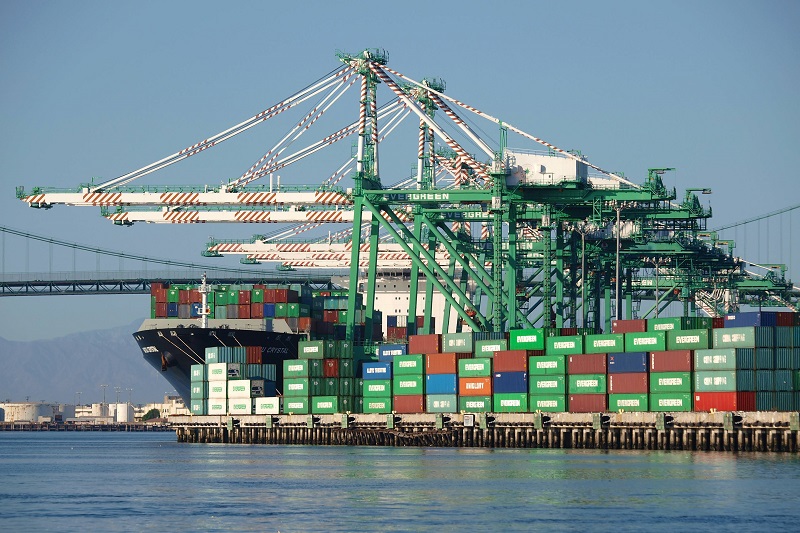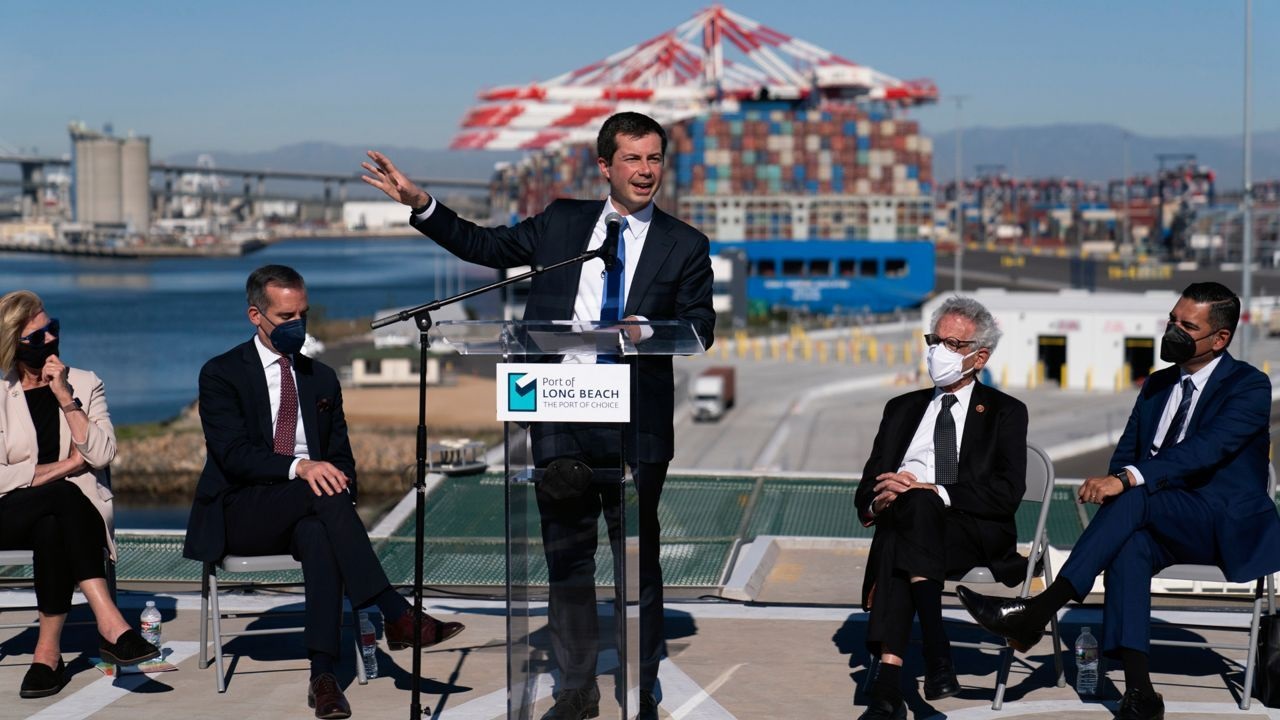


[AUTHORS NOTE: Having attended the ASEAN conference to make contacts, after a brief respite at home I spent the past several weeks traveling Southeast Asia to research the likely impact from Trump’s tariff and global trade reset. Visits included manufacturing and distribution facilities in the Philippines, Malaysia, Thailand, Vietnam, Cambodia, Sri Lanka and South Korea. What I will share with you in the next few months is an overview from direct first-hand discussions, contrast against the MSM financial media outline.]
 The predictable doomsday Wall Street Journal narrative includes a forecast for a massive drop in exports from China as shipping conglomerates begin to outline a drop in trans-pacific sea cargo and container carriers.
The predictable doomsday Wall Street Journal narrative includes a forecast for a massive drop in exports from China as shipping conglomerates begin to outline a drop in trans-pacific sea cargo and container carriers.
What I would say to concerned Americans is to filter out the political narrative and remind yourself of the expanded footprint throughout SE Asia that Beijing has already established. Chinese companies, many of them subsidized by the CCP, are pre-positioned to begin transnational shipping. I have witnessed it first-hand. However, here’s the WSJ narrative as it begins.
WSJ – The number of ships sailing from China to the U.S. laden with clothes, electronics, furniture and other goods is plunging, as an accelerating number of cargoes are canceled.
The scrapped sailings come after the Trump administration ratcheted up tariffs on China while giving a three-month reprieve on punitive levies for much of the rest of the world.
At the Port of Los Angeles, one of America’s biggest gateways for imports from China, executive director Gene Seroka told port officials Thursday that he expects a 35% drop in import volumes in two weeks “as essentially all shipments out of China for major retailers and manufacturers has ceased.”
The trade war between the U.S. and China has triggered retailers and manufacturers to switch their supply lines and rush products out of other parts of Asia, such as Vietnam and Malaysia. Companies are making hurried decisions about imports as they gear up for the peak shipping season this summer when retailers bring in supplies for the new school year and the fall and winter holidays.
Bookings out of China fell 60% in the past week after Trump imposed a succession of tariffs on China that reached 145% on April 9, according to Nathan Strang, director of ocean freight at Flexport, a San Francisco-based company that helps companies ship cargo around the world.
Importers that work with Chinese manufacturers that also have factories in other parts of Asia are pivoting: “They’re saying, ‘Today we are stopping China production, tomorrow we are starting Cambodia,’” Strang said.
Dozens of canceled sailings from China were due to reach U.S. seaports in the coming weeks. Freight demand from China to the West Coast of the U.S. could fall 28% next week, while demand at East Coast ports could plunge 42% the following week, according to Alan Murphy, chief executive of Denmark-based data firm Sea-Intelligence. ”The impact is staggering,” he said. (more)
♦ Key point for consideration: Just because cargo comes from Vietnam, Cambodia and/or Malaysia ports instead of China, does not mean the product within the cargo is not Chinese. In reality the tentacles of Beijing’s proactive positioning are very visible within each of the aforementioned nations.
It is also obvious from the approach taken by President Trump and his trade team; they are well aware of the belt-and-road hubs China established in the past decade.
Following the 2017 tariff hammer, China rapidly began leveraging their prior SE Asia investment as a workaround to what Beijing forecast as a tariff risk they strategically wanted to manage. Chinese companies are now embedded throughout ASEAN nations.
Indeed, there may be fewer container shipments directly from China, however those alternate supply lines noted in the WSJ article are filled with mostly Chinese products.
The result: the containers that arrive to the U.S. from Vietnam, Malaysia, Cambodia, Sri Lanka and even India, will likely be carrying a high percentage of products made in China, along with a combination of products from final assembly or finishing in the export hub. [It is worth noting India’s Prime Minister Narendra Modi is well aware of this also.]
 ♦ Into this dynamic I would proactively note interested political followers in the USA should pay close attention to how the International Longshoremen’s Association (ILA) responds to the corporate media narrative.
♦ Into this dynamic I would proactively note interested political followers in the USA should pay close attention to how the International Longshoremen’s Association (ILA) responds to the corporate media narrative.
The narrative will be that fewer container ships from China (tariff impact) will have a negative impact on dock workers and tradespeople who work in the ports for U.S. imports. Fewer imported cargo containers equal less work for the longshoremen; that’s the first part of this predictable corporate narrative. However, in 2024 President Trump was forcefully out front in supporting the ILA union contract position.
Will the International Longshoremen’s Association stand with Trump, or will they drop support as the global trade reset emphasizes domestically manufactured jobs? That will be an interesting aspect to watch because the dockworker union leadership will face massive pressure to comply with the anti-tariff narrative.
♦ The last political aspect for proactive review comes from what will predictably be a massive push at the end of this year to emphasize any shortfalls in product supply issues. Democrats will blame President Trump for empty shelves, missing parts or finished consumer goods (true or not). Even small sector products that might be missing will be dramatically emphasized. Prepare for this, because it will be part of the 2026 election narrative.
Democrats, Wall Street multinationals, corporate media and all of those interests who are opposed to the trade reset and tariffs will seek to exploit and influence consumer anxiety as the holidays loom closer.

